On Your Toes

Brief Synopsis
Cast & Crew
Ray Enright
Zorina
Eddie Albert
Alan Hale
Frank Mchugh
James Gleason
Film Details
Technical Specs

Synopsis
In the 1920's, vaudeville reigned supreme as the Dancing Dolans tapped their way across the nation's stages. Fifteen years later, the act has become dated, and son Junior decides to quit to become a great composer. While in a bar, Junior meets Russian composer Ivan Boultonoff, who offers to teach him the art of composition. The pair return to Ivan's hotel room, where the Russian ballet troupe of impresario Sergei Alexandrovitch is quartered. That night, as Ivan dozes, Junior composes a ballet he names "Slaughter on Tenth Avenue." The next morning, Ivan awakens and presents the composition as his own to Alexandrovitch, who takes an instant disliking to Junior. In addition to Alexandrovitch, Junior also meets Vera Barnova, the troupe's prima ballerina whom, he discovers, he knew as a girl in vaudeville. As Vera and Junior resume their romance, one of the dancers in the chorus disappears, and Junior is pressed into dancing his part. When Junior's performance turns the turgid ballet into a farce, however, Junior flees the theater in disgrace. The critics, however, hail Junior's blunder as a new technique, prompting Peggy Porterfield, the ballet's patroness, to insist upon staging "Slaughter on Tenth Avenue." The embarrassed Junior returns to bid Vera farewell, and when Vera discovers that he and not Ivan wrote the ballet, she insists upon his participation in the show. Junior's ideas clash with those of Constantine Morrisine, the lead male dancer, and when their disagreement ends in a skirmish, Morrisine breaks his ankle, forcing Junior to take his place on stage. Meanwhile, the resentful Alexandrovitch arranges for Junior to be assassinated at the end of the dance, but Ivan discovers his plot and saves Junior's life as the curtain falls to thunderous applause.

Director
Ray Enright
Cast
Zorina

Eddie Albert

Alan Hale
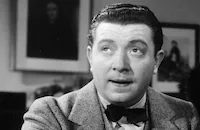
Frank Mchugh

James Gleason

Leonid Kinsky

Gloria Dickson

Erik Rhodes
Queenie Smith
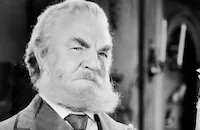
Berton Churchill
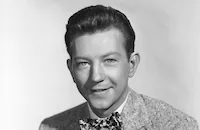
Donald O'connor
Paul Hurst
Sarita Wooton
Alex Melesh

Gregory Gaye
Konstantin Shayne
Adia Kuznetzoff
Leon Belasco
Marek Windheim
Charles Laskey
Creighton Hale
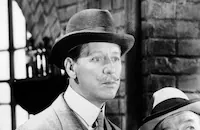
Irving Bacon
Nat Carr
Billy Wayne
Bert Hanlon
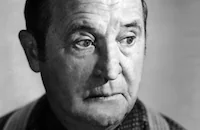
Frank Orth
Tommy Bupp
Cliff Saum
Ed Gargan
Wade Boteler
De Wolfe Hopper
Crew
George Balanchine
Robert Burks
Hugh Cummings
Leo F. Forbstein
David Forrest
Oliver S. Garretson
Robert Haas
Byron Haskin
Byron Haskins
Frank Heath
Ray Heindorf
Sig Herzig
Jesse Hibbs
James Wong Howe
Clarence Kolster
Robert Lord
Richard Macaulay
Orry-kelly
Sol Polito
Lawrence Riley
Bob Ross
Ted Thomas
Jerry Wald
Jack L. Warner
Perc Westmore

Film Details
Technical Specs

Articles
On Your Toes
Executive produced by Hal B. Wallis and directed by Ray Enright, from a screenplay by Jerry Wald and Richard Macaulay, with adaptation by Sig Herzig and Lawrence Riley, On Your Toes was based on the Broadway musical by Richard Rodgers, Lorenz Hart, and George Abbott. The play had been conceived as a film role for Fred Astaire, but Astaire turned it down. Rodgers later explained that "Astaire at that point in his career was a pretty chic fellow who usually wore white ties and tails, and the producers felt that there was no chance in our script for him to appear that way." The play ran for 315 performances at the Imperial Theater, with Ray Bolger. Tamara Geva and Monty Woolley. The British production, which played in London's West End, starred Jack Whiting and Vera Zorina. When the film was finally brought to Hollywood, Eddie Albert was Junior and Vera Zorina appeared as Vera.
The Dancing Dolans (James Gleason and Queenie Smith) had long been in vaudeville, but now in 1939, their son Junior (played by Donald O'Connor as a child and Albert as an adult) leaves the act to become a composer. He meets a Russian composer, Ivan Boultonoff (Leonid Kinskey) who offers to tutor him, but ends up stealing his jazz ballet called "Slaughter on Tenth Avenue," and selling it to Russian impresario Sergei Alexandrovitch (Alan Hale). Junior doesn't mind, because he's just resumed his romance with dancer Vera Barnova (Zorina), who he recognizes as the little Russian girl he fell in love with in vaudeville years before. When Junior substitutes for a missing dancer, his antics ruin the ballet, but delight the critics who think it's supposed to be funny. The ballet is retooled to be purposefully comic, and Junior continues with the show. Alexandrovitch, angry with Junior for changing his ballet, puts a hit out on his life. Also in the cast were Warner Bros. reliable supporting players like Frank McHugh as the stage manager, Reilly, and Gloria Dickson as Peggy Porterfield, Alexandrovitch's wealthy patron.
James Cagney had been set to star in On Your Toes when he suddenly dropped out, leaving Warner Bros. without a leading man. They quickly chose Albert, who had made a hit in Brother Rat (1938), but was appearing onstage in The Boys from Syracuse . He was quickly brought back to the studio to prepare for the part. Associate producer Robert Lord wrote to Hal Wallis, "It is not easy to make a picture about a dancer played by an actor who can't dance at all," and famed choreographer George Balanchine (who had just married Vera Zorina) had his own reservations about Albert's ability. In order to be convincing on the screen, Albert took tap dance lessons, and Balanchine worked with him to move properly. As Gary Marmorstein wrote, one morning, Balanchine and Albert were carpooling together to the Warner Bros., driving along San Vicente Boulevard, with Balanchine trying to explain a ballet move. Albert wasn't able to visualize it, so "Balanchine pulled the car over, got out, and said, 'Come, I show you!' Signaling for Albert to follow, Balanchine lunged across two lanes of traffic to the median. While passersby gaped, the two men practiced lifting each other.'"
The film was released on October 29, 1939 with the premiere at the Strand Theater in New York. It played well in big cities but it did not equal success in more rural areas. Frank Nugent, in his review for The New York Times , wrote that the film was "still [...] an ingratiating show [...] Zorina is lovely, Mr. Albert is almost as good as Mr. Bolger was and the score is just the same and just as fine. [But] there's nothing more discouraging than the sight of a cast, with its fingers in its ears and its eyes tight shut, pretending that its laugh-lines are exploding and not simply going 'pop.'
By Lorraine LoBianco
SOURCES:
Grimmond, Peter Oxford Companion to Popular Music
The Internet Movie Database
Nugent, Frank "The Screen; 'On Your Toes,' From the Rodgers and Hart Library, Opens at the Strand" The New York Times 21 Oct 39
Reid, John Howard More Movie Musicals
http://www.tcm.com/tcmdb/title/589/On-Your-Toes/

On Your Toes
Eddie Albert (1906-2005)
The son of a real estate agent, Albert was born Edward Albert Heimberger in Rock Island, Ill., on April 22, 1906. His family relocated to Minneapolis when he was still an infant. Long entralled by theatre, he studied drama at the University of Minnesota. After years of developing his acting chops in touring companies, summer stock and a stint with a Mexican circus, he signed a contract with Warner Bros. and made his film debut in Brother Rat (1938). Although hardly a stellar early film career, he made some pleasant B-pictures, playing slap happy youths in Brother Rat and a Baby (1940), and The Wagons Roll at Night (1941).
His career was interrupted for military service for World War II, and after his stint (1942-45), he came back and developed a stronger, more mature screen image: Smash-Up: The Story of a Woman (1947); Carrie (1952); his Oscar® nominated turn as the Bohemian photographer friend of Gregory Peck in Roman Holiday (1953); a charming Ali Hakim in Oklahoma (1955); and to many critics, his finest hour as an actor, when he was cast unnervingly against type as a cowardly military officer whose lack of commitment to his troops results in their deaths in Attack! (1956).
As he settled into middle-age, Albert discovered belated fame when he made the move to Hooterville. For six seasons (1965-71), television viewers loved Eddie Albert as Oliver Wendal Douglas, the bemused city slicker who, along with his charming wife Lisa (Eva Gabor), takes a chance on buying a farm in the country and dealing with all the strange characters that come along their way. Of course, I'm talking about Green Acres. If he did nothing else, Alberts proved he could be a stalwart straight man in the most inane situations, and pull it off with grace.
After the run of Green Acres, Albert found two of his best roles in the late stages of his career that once again cast him against his genial, good-natured persona: the fiercly overprotective father of Cybill Shepherd in The Heartbreak Kid (1972), for which he earned his second Oscar® nomination; and the sadistic warden in Robert Aldrich's raucous gridiron comedy The Longest Yard (1974). Soon, Albert was in demand again, and he had another hit series, playing a retired police officer who partners with a retired con artist (Robert Wagner) to form a detective agency in Switch (1975-78).
The good roles slowed down slightly by the dawn of the '80s, both film: The Concorde: Airport '79 (1979), How to Beat the High Co$t of Living (1980), Take This Job and Shove It (1981); and television: Highway to Heaven, Murder, She Wrote, Thirtysomething, offered him little in the way of expansion. Yet, Albert spent his golden years in a most admirable fashion, he became something of activist for world health and pollution issues throughout the latter stages of his life. It is widely acknowledged that International Earth Day (April 22) is honored on his birthday for his tireless work on environemental matters. Albert was married to famed hispanic actress Margo (1945-85) until her death, and is survived by his son, actor Edward Albert, a daughter, and two granddaughters.
by Michael T. Toole
Eddie Albert (1906-2005)
Donald O'Connor, 1925-2003
Born Donald David Dixon O' Connor in Chicago on August 28, 1925, he was raised in an atmosphere of show business. His parents were circus trapeze artists and later vaudeville entertainers, and as soon as young Donald was old enough to walk, he was performing in a variety of dance and stunt routines all across the country. Discovered by a film scout at age 11, he made his film debut with two of his brothers in Melody for Two (1937), and was singled out for a contract by Paramount Pictures. He co-starred with Bing Crosby and Fred MacMurray in Sing, You Sinners (1938) and played juvenile roles in several films, including Huckleberry Finn in Tom Sawyer - Detective (1938) and the title character as a child in Beau Geste (1939).
As O'Connor grew into adolescence, he fared pretty well as a youthful hoofer, dancing up a storm in a string of low-budget, but engaging musicals for Universal Studios (often teamed with the equally vigorous Peggy Ryan) during World War II. Titles like What's Cookin', Get Hep to Love (both 1942), Chip Off the Old Block and Strictly in the Groove (both 1943) made for some fairly innocuous entertainment, but they went a long way in displaying O'Connor's athletic dancing and boyish charm. As an adult, O'Connor struck paydirt again when he starred opposite a talking mule (with a voice supplied by Chill Wills) in the enormously popular Francis (1949). The story about an Army private who discovers that only he can communicate with a talking army mule, proved to be a very profitable hit with kids, and Universal went on to star him in several sequels.
Yet if O'Connor had to stake his claim to cinematic greatness, it would unquestionably be his daringly acrobatic, brazenly funny turn as Cosmo Brown, Gene Kelly's sidekick in the brilliant Singin' in the Rain (1952). Although his self-choreographed routine of "Make "Em Laugh" (which includes a mind-bending series of backflips off the walls) is often singled out as the highlight, in truth, his whole performance is one of the highlights of the film. His deft comic delivery of one-liners, crazy facial expressions (just watch him lampoon the diction teacher in the glorious "Moses Supposes" bit) and exhilarating dance moves (the opening "Fit As a Fiddle" number with Kelly to name just one) throughout the film are just sheer film treats in any critic's book.
After the success of Singin' in the Rain, O'Connor proved that he had enough charisma to command his first starring vehicle, opposite Debbie Reynolds, in the cute musical I Love Melvin (1953). He also found good parts in Call Me Madam (1953), There's No Business Like Show Business (1954), and Anything Goes (1956). Unfortunately, his one attempt at a strong dramatic role, the lead in the weak biopic The Buster Keaton Story (1957) proved to be misstep, and he was panned by the critics.
By the '60s, the popularity of musicals had faded, and O'Connor spent the next several years supporting himself with many dinner theater and nightclub appearances; but just when it looked like we wouldn't see O'Connor's talent shine again on the small or big screen, he found himself in demand at the dawn of the '90s in a string of TV appearances: Murder She Wrote, Tales From the Crypt, Fraser, The Nanny; and movies: Robin Williams' toy-manufacturer father in Toys (1992), a fellow passenger in the Lemmon-Matthau comedy, Out to Sea (1997), that were as welcoming as they were heartening. Survivors include his wife, Gloria; four children, Alicia, Donna, Fred and Kevin; and four grandchildren.
by Michael T. Toole
Donald O'Connor, 1925-2003
Quotes
Trivia
Notes
According to pre-production news items in Hollywood Reporter, Warner Bros. originally wanted James Cagney to play the male lead. When Cagney was unavailable, Eddie Albert was slated for the role. When Albert refused to report for work unless he was given a raise, however, the studio considered signing Ray Bolger for the part. Other pre-production news items in Hollywood Reporter note that Lloyd Bacon was slated to direct the film, but was re-assigned to Career Man. Alan Hale replaced Adolphe Menjou in the role of "Sergei Alexandrovitch" because Menjou had a prior committment to The Housekeeper's Daughter. A Hollywood Reporter production chart credits Sid Hickox with photography, but his participation in the final film has not been confirmed. Other news items in Hollywood Reporter add that the film was shot partially on location at Toluca Lake, CA. The film was released in England and France on October 6, 1939.















